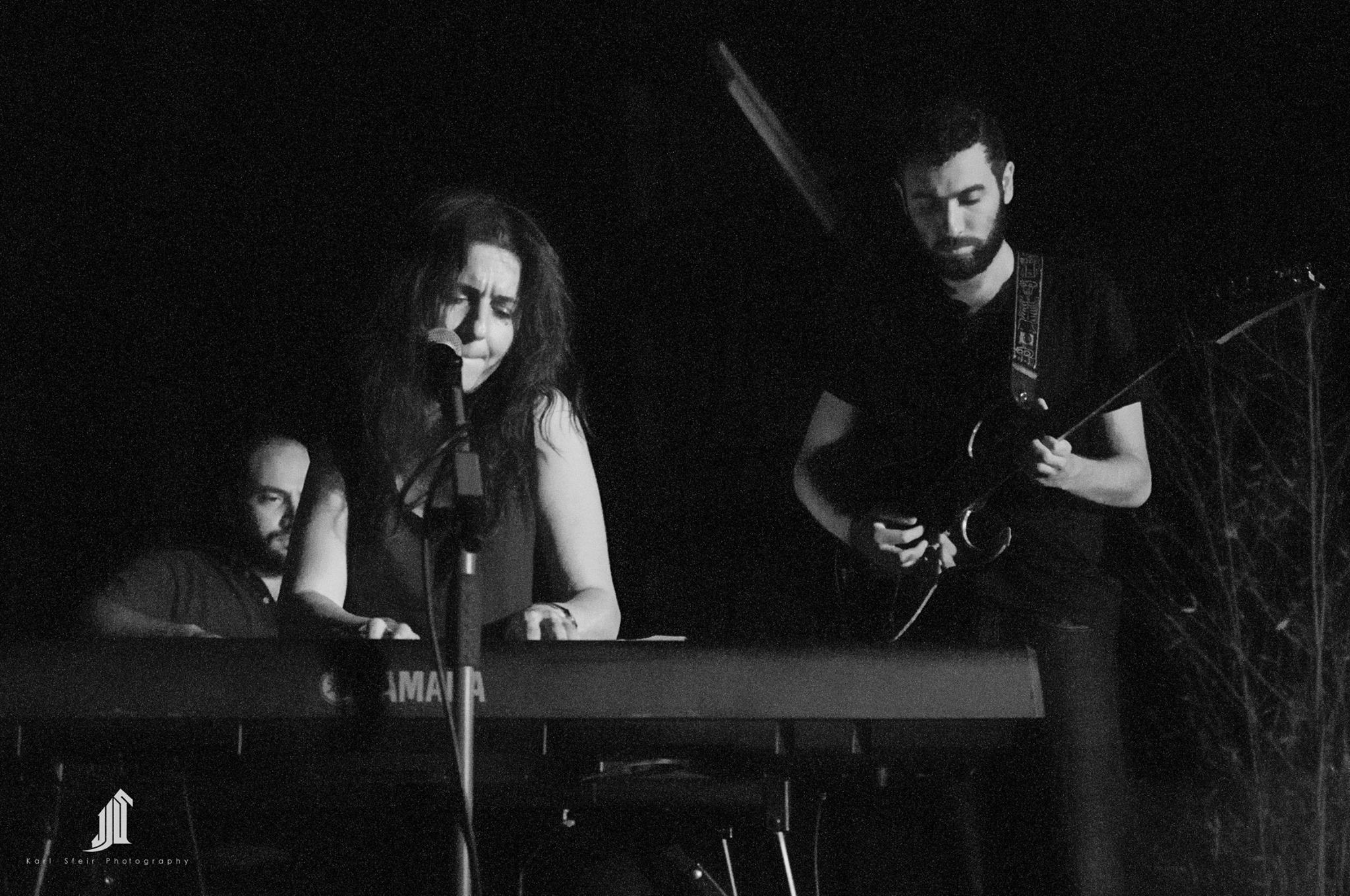For the last six years, while collaborating musicians have come and gone, Sandmoon creator Sandra Arslanian has remained a constant. The band’s latest EP, #InTheEnd, is an organic orchestration of voice and instrument, presenting listeners with five very different songs which combine to tell the story of a flower child, a ghost, and a gypsy.
Although Sandmoon came to be in 2010, their sound is both a nod to the golden age of folk in the 60s and a throwback to the more recent melancholia of the 90s. Indieshuffle’s “sounds like” tags of Jefferson Airplane and Portishead say it best—this is a band that gives you nostalgia for a time you remember and one you might not. Arslanian’s voice itself takes on the dual qualities of angelic and haunting, offering a depth to each and every song. A testament to Sandmoon’s timeless sound, her voice reminds us of the Velvet Underground’s Nico, but also Phoebe Killdeer’s more recent “Fade Out Lines.”
The band is comprised of Arslanian (piano/vocals/ukelele), Sam Wehbi (acoustic & electric guitar), Georgy Flouty (electric guitar/soundscapes), Ribal Kallab (cello), and Maen Rajab (acoustic & electric guitar). Their first album, raW was released in 2010, with Home following in 2013. After a mini Euro tour last year, Sandmoon is back with a sound that is definitely eclectic in both subject and sound.
The album’s first single, “Time Has Yet To Come,” has a 90’s vibe with an infusion of Middle Eastern elements. The music video features deaf expressionist dancer, Pierre Gaegea, performing in an abandoned building. Watching him, you would never guess at any sort of hearing impairment as he moves effortlessly to the rise and fall of the song. The paint-chipped walls leading up to high ceilings combine with the wistfulness in Arslanian’s voice, capturing the essence of what it means to exist in Beirut. One YouTube commenter put it perfectly, saying:
“Why does this song make me think about Beyrouth under [the] rain? Why does it make me feel [I’m] back [in] crazy Hamra [at] night, late at night @ Mar Michael, or waiting [for] some girl [in] Mkalles?”
“Do Not Stand at My Grave and Weep,” an interpretation of the Emily Frye poem, takes on a more mellow sound with darker content. It’s here that Arslanian sounds a little like Sinead O’Connor, especially when she emphatically sings, “Do not stand and at my grave and cry/I am not there.” While a gentle country melody might not be the most obvious choice for Arslanian’s almost Dido-esque voice, it works perfectly here, providing a simple backdrop for the heavier lyrics.
The album starts to bring the energy levels higher with “Something In Mind.” It offers a predominantly folk sound, a trumpet adding an oriental infusion. There’s a jaunty, gypsy quality to the tune, and when Arslanian’s voice rolls, it has a depth that reminds the listener of Shakira. But it’s “In The End” which steals the show, giving a nod to rock goddess PJ Harvey. The bassline reminds us of the rock in folk rock, remaining steady as other sounds rise and fall, making this song a journey of sorts. Arslanian’s voice is commanding here—it climbs high and drops low as the drum beat eggs her on.

The album closes with a touch of tranquility. “This Mess” is a lullaby of sorts, gently leading the listener back into their own world. It’s a farewell from Arslanian, (“Some day I will leave/You have bled, will bleed again”), perhaps to her city of Beirut.
The varied styles and sounds of this album mean that it’s hard to say which song is best or most authentic to the band’s sound. Highlights are the Frye rendition and “In The End” for their darker qualities—Arslanian’s ghostly voice does best when the words themselves are dark or its accompanied by a steady bassline and a rougher sound. The five songs pack a lot into about 20 minutes, taking listeners on an ethereal ride through Sandmoon’s tribute to their influences.
Photo credits:
Photo 1: Karl Sfeir
Photo 2: Sabyl Ghoussoub

